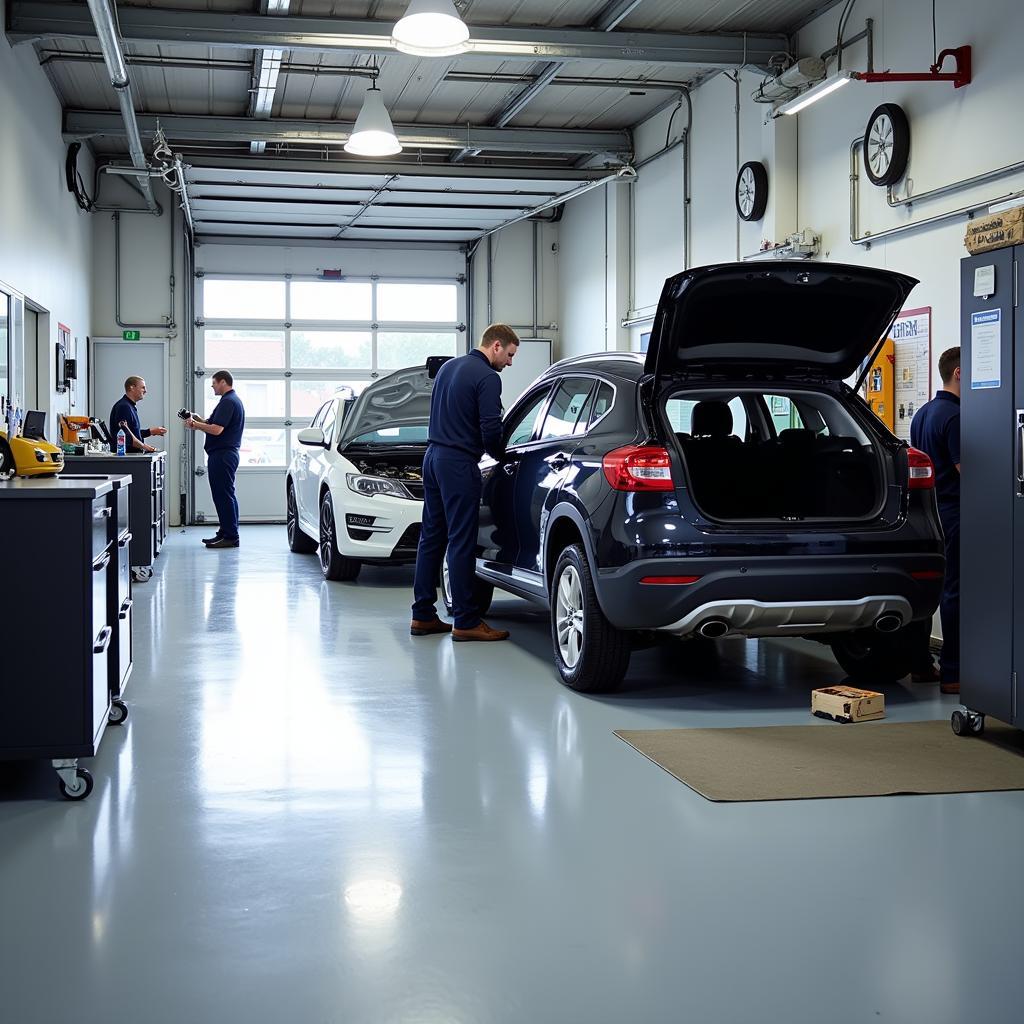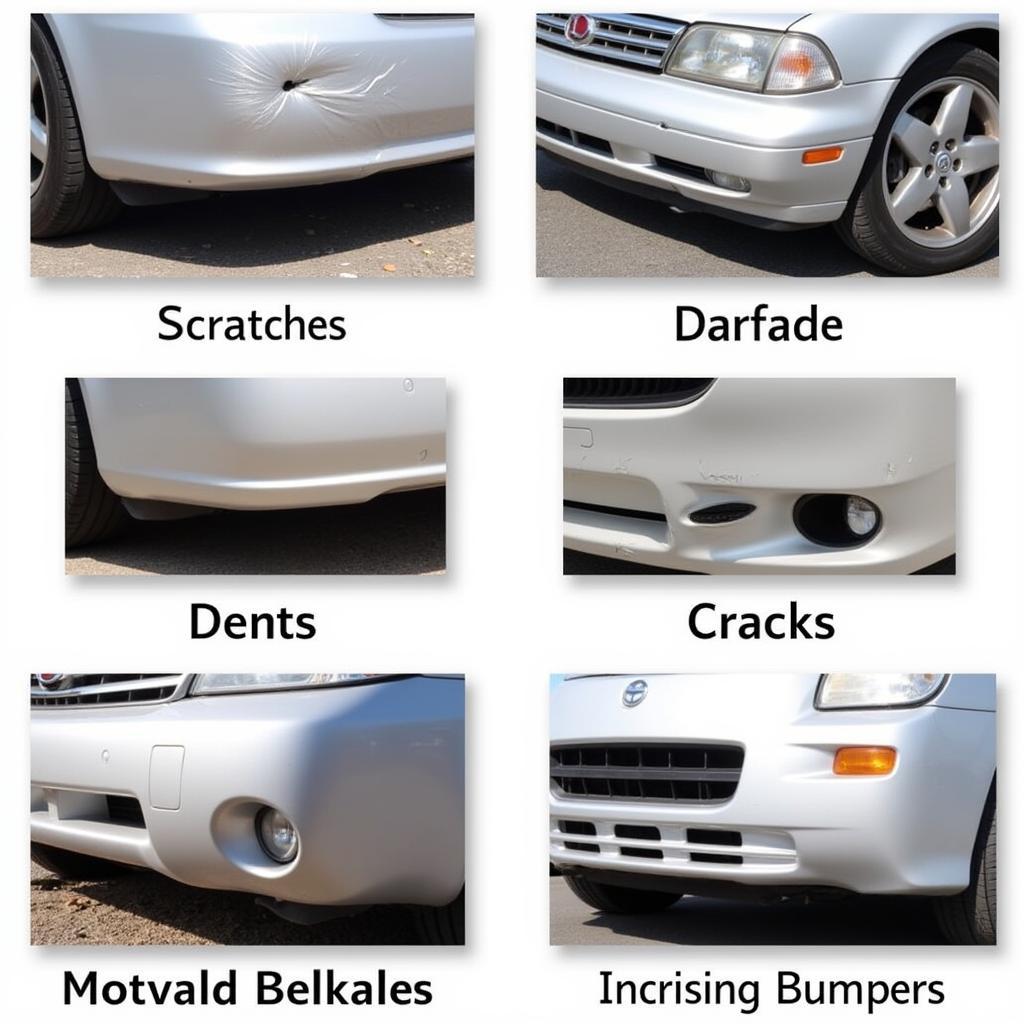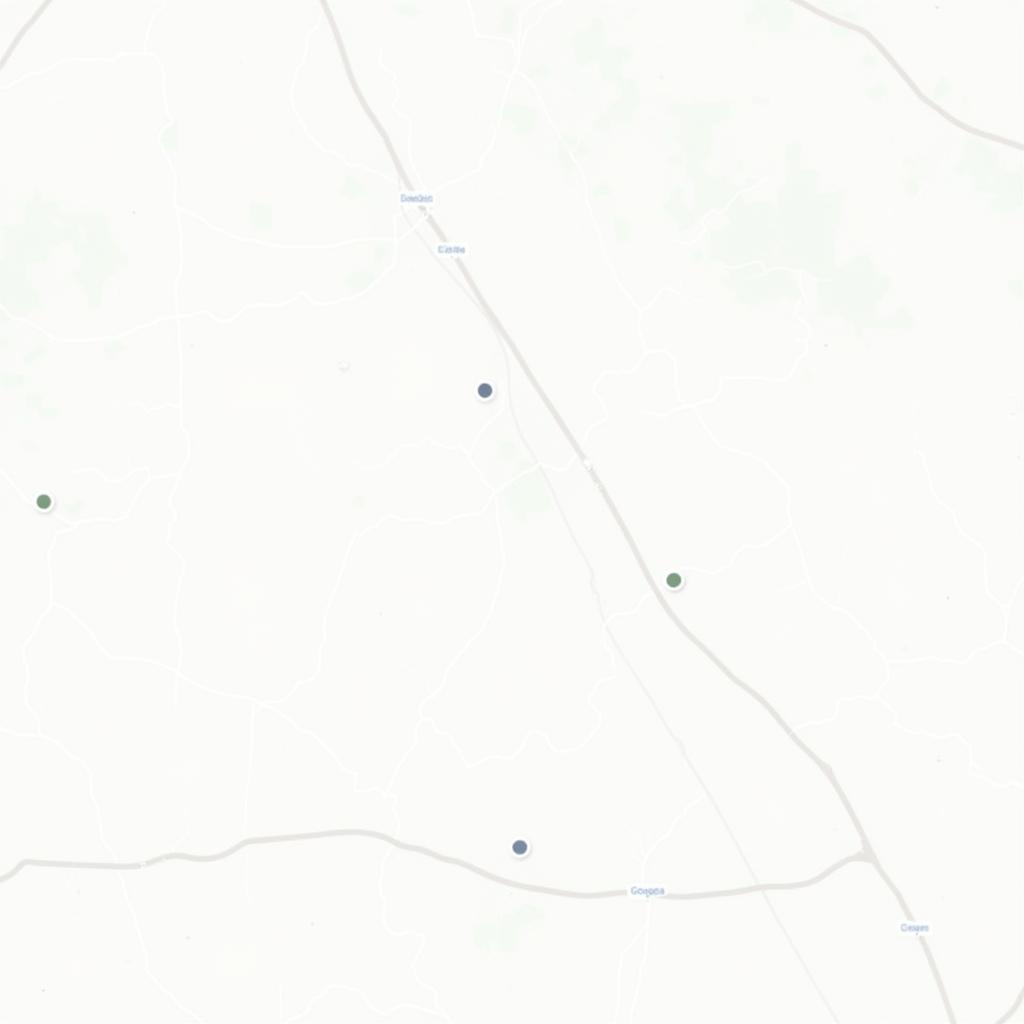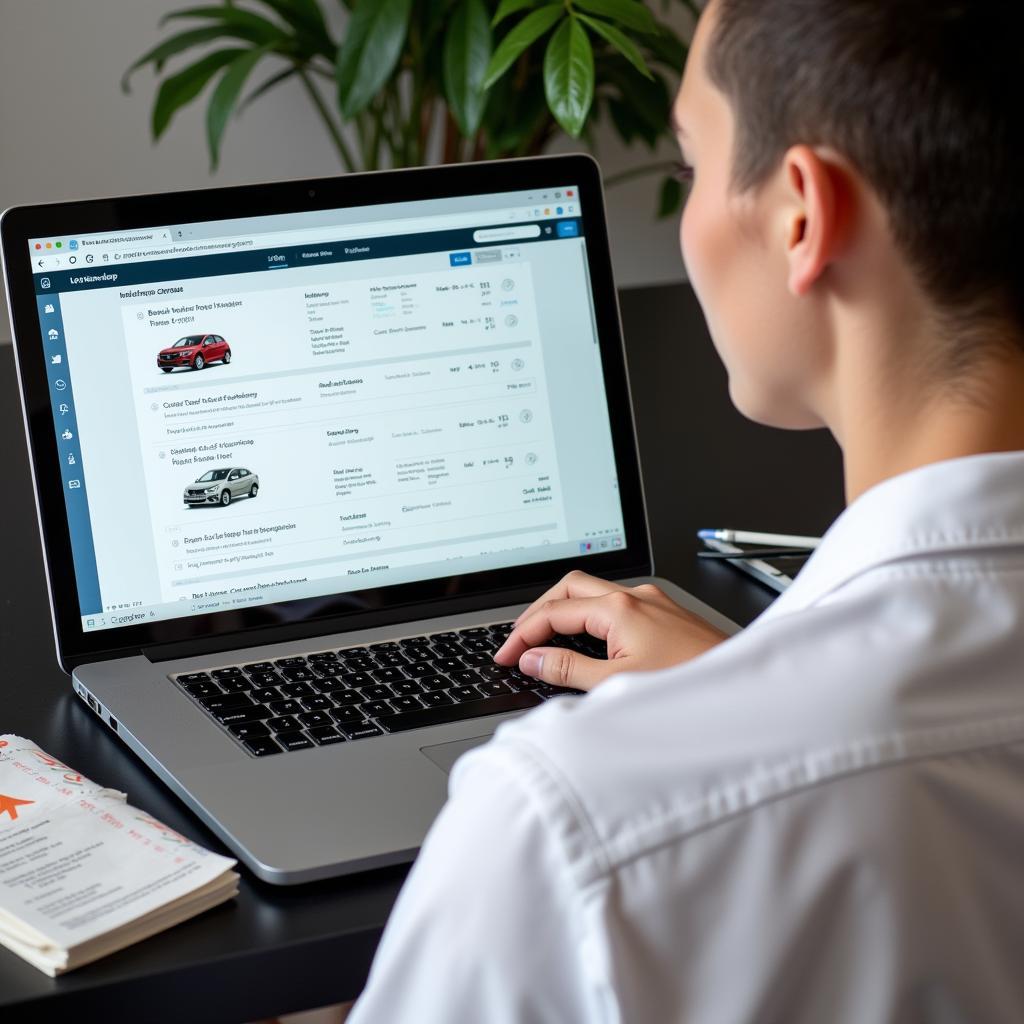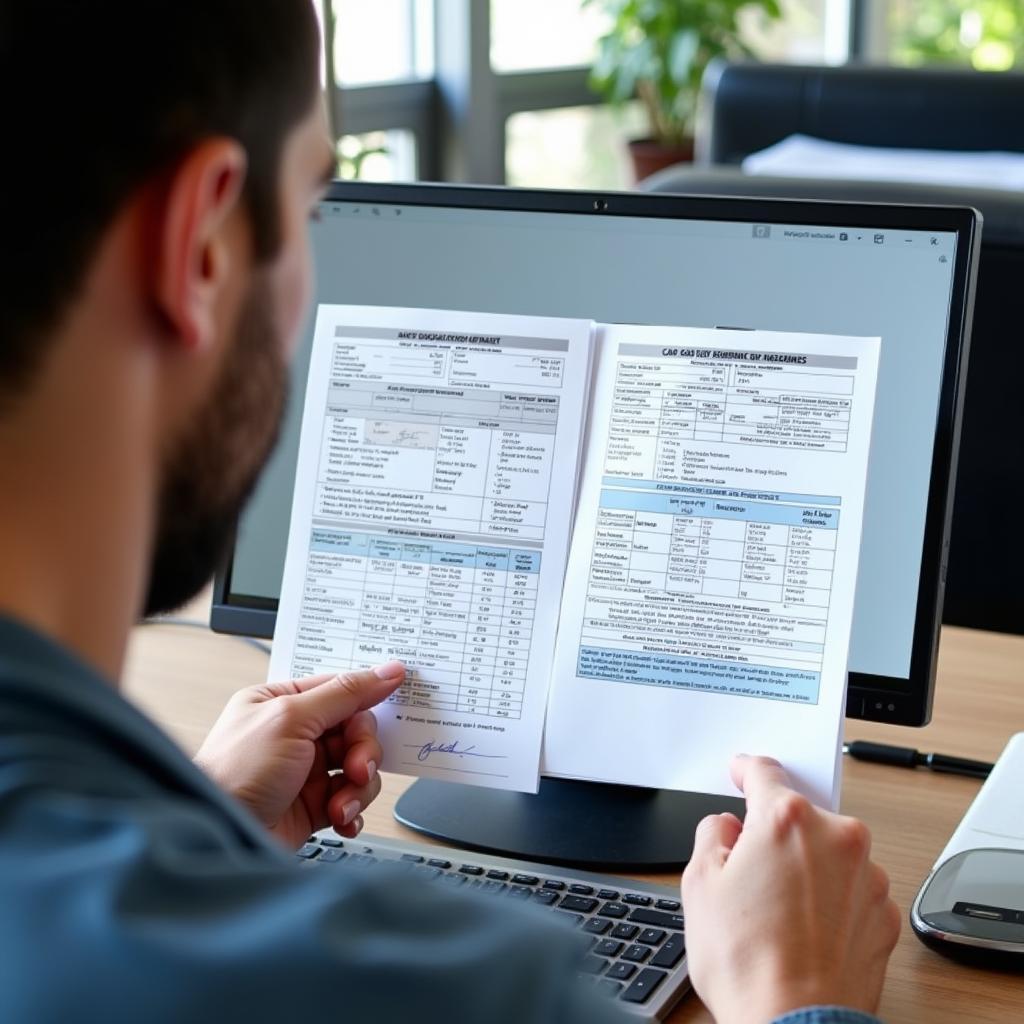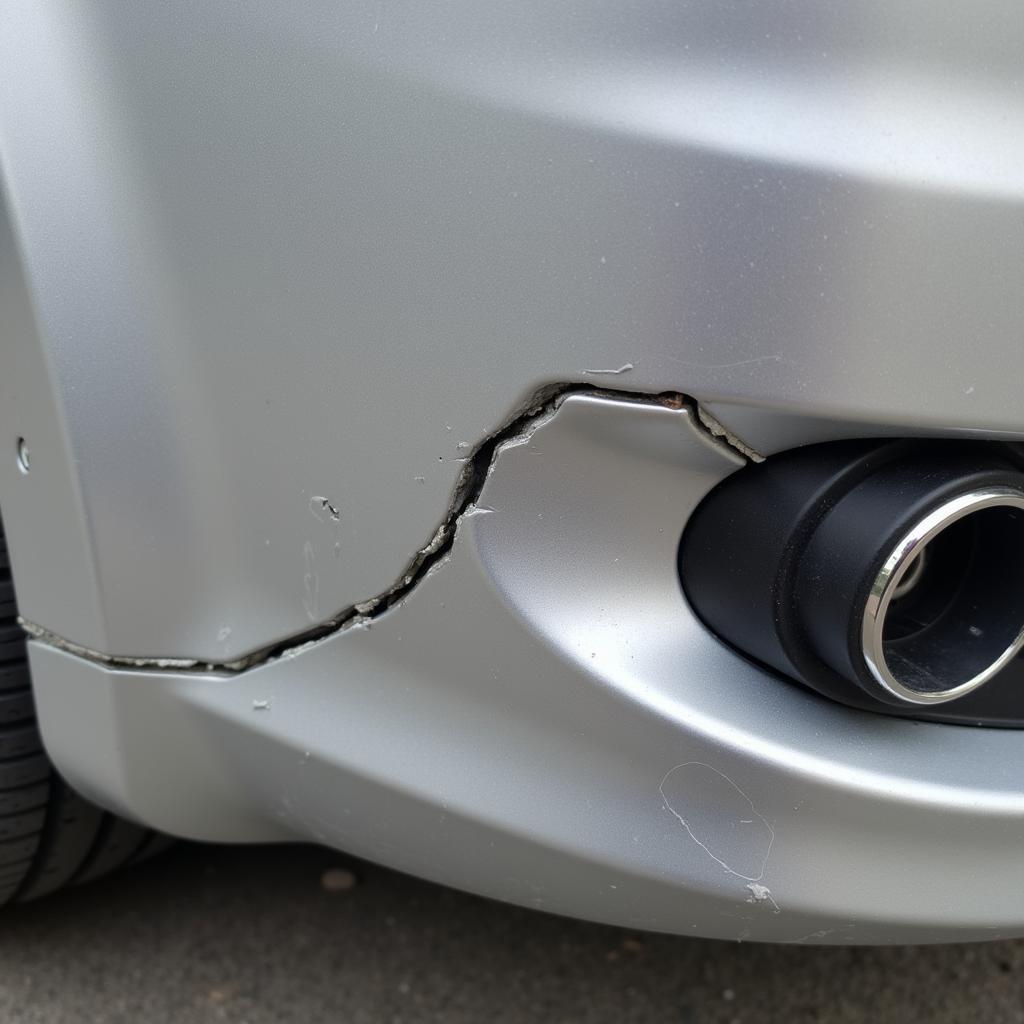
Repairing a Cracked Plastic Car Bumper
A damaged car bumper can be an eyesore and potentially affect your vehicle’s safety. Knowing How To Repair Damaged Plastic Car Bumper yourself can save you a significant amount of money and is often a surprisingly manageable DIY project. This guide will walk you through the process, from assessing the damage to achieving a professional-looking finish.
After assessing the damage, gather your supplies. You’ll need sandpaper, plastic filler, primer, paint, and clear coat. For minor scratches, a best white car repair pen for plastic bumper can be a quick fix.
Assessing the Damage: A Crucial First Step
Before starting any repair, thoroughly examine the bumper. Determine the extent of the damage, whether it’s a minor scratch, a deep gouge, or a crack. This assessment dictates the necessary repair method and materials. Is the damage purely cosmetic, or does it compromise the bumper’s structural integrity? Understanding the type of plastic your bumper is made of is also crucial. Most modern bumpers are made of thermoplastic olefin (TPO) or polypropylene (PP).
Gathering Your Supplies: The Right Tools for the Job
Having the right tools and materials is key to a successful bumper repair. Depending on the damage, you will likely need sandpaper of varying grits, plastic bumper filler, adhesion promoter, primer designed for plastic, paint that matches your car’s color, clear coat, masking tape, and plastic sheeting. For cracks, a plastic welding kit or strong epoxy might be necessary. Don’t forget safety equipment like gloves and a respirator, especially when working with chemicals.
 Repairing a Cracked Plastic Car Bumper
Repairing a Cracked Plastic Car Bumper
Repairing Minor Scratches and Scuffs
Minor scratches and scuffs can often be addressed with simple sanding and touch-up paint. Start with a fine-grit sandpaper to smooth the area, followed by a polishing compound to restore shine. For deeper scratches, a touch-up pen or spray paint can be used.
Repairing Deep Gouges and Cracks: A Step-by-Step Guide
For deeper damage, repairing car bumpers plastic requires a more involved approach.
- Clean the area: Thoroughly clean the damaged area with soap and water, then degrease with a suitable solvent.
- Sand the damaged area: Sand the damaged area and surrounding area with coarse grit sandpaper to create a rough surface for the filler to adhere to.
- Apply plastic filler: Apply the plastic filler to the damaged area, ensuring it fills the gouge or crack completely.
- Sand the filler: Once the filler dries, sand it down with progressively finer grits of sandpaper until smooth and flush with the surrounding bumper.
- Apply primer: Apply several thin coats of primer designed for plastic, allowing each coat to dry before applying the next.
- Paint and Clear Coat: Apply thin coats of paint matching your car’s color, followed by clear coat for protection and shine.
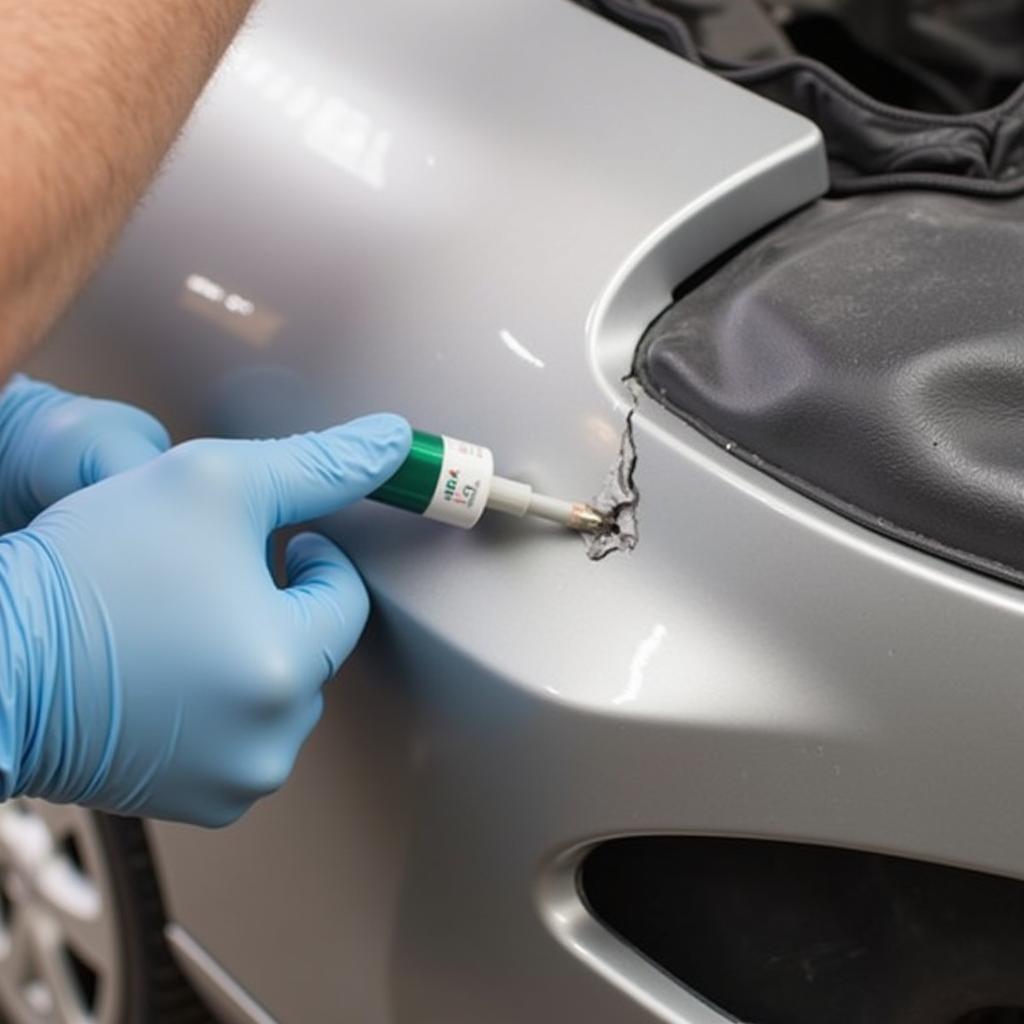 Applying Plastic Filler to Car Bumper
Applying Plastic Filler to Car Bumper
What if the Bumper is Detached?
If your bumper is detached, you might need to car bumper repair adhesive. Depending on the severity of the detachment, you might need professional help. If you’re comfortable with basic car repair, you may be able to reattach the bumper yourself using appropriate adhesives or by replacing broken clips.
Finding Professional Help: When DIY Isn’t Enough
While many bumper repairs can be done at home, some require professional expertise. For significant damage or if you’re unsure about any step of the process, seeking professional help is recommended. Depending on your location, you can consider options like car bumper repair clinton or car bumper repair fort worth.
Conclusion: Restoring Your Bumper to its Former Glory
Repairing a damaged plastic car bumper can be a rewarding DIY project, saving you money and giving you a sense of accomplishment. By carefully assessing the damage and following the appropriate steps, you can restore your bumper to its former glory and keep your car looking its best. Remember, when you know how to repair damaged plastic car bumper, you’re empowered to take control of minor car repairs.
FAQ
-
What type of plastic are most car bumpers made of?
- Most modern car bumpers are made of thermoplastic olefin (TPO) or polypropylene (PP).
-
Can I repair a cracked bumper myself?
- Yes, minor cracks can be repaired with a plastic welding kit or epoxy. Larger cracks may require professional repair.
-
What kind of paint should I use for bumper repair?
- Use automotive paint specifically designed for plastic bumpers and ensure it matches your car’s color code.
-
How long does it take for plastic filler to dry?
- Drying time varies depending on the product but generally takes between 30 minutes to a few hours.
-
When should I seek professional help for bumper repair?
- Seek professional help for extensive damage, structural issues, or if you’re uncomfortable with any step of the DIY process.
-
How can I prevent further damage to my car bumper?
- Park carefully, avoid bumping into objects, and consider installing a bumper protector.
-
What can I do if my bumper is detached?
- If the bumper is detached, you might need adhesives or new clips. Professional help might be necessary depending on the severity.
Situations you Might Encounter
- Deep scratches that expose the underlying material: This requires filling and repainting.
- Cracks that run along the bumper: These can be repaired with plastic welding or epoxy, but professional repair may be best for structural integrity.
- Dents and deformations: Minor dents might be repairable with heat, but significant deformations often require replacement.
Further Exploration on CarRepairOnline
- Explore our guide on choosing the best car repair pen for your needs.
- Learn more about different types of bumper repair adhesives.
- Find local car bumper repair services in your area.
Need more assistance? Contact us via WhatsApp: +1(641)206-8880, or Email: [email protected]. Our customer support team is available 24/7.

